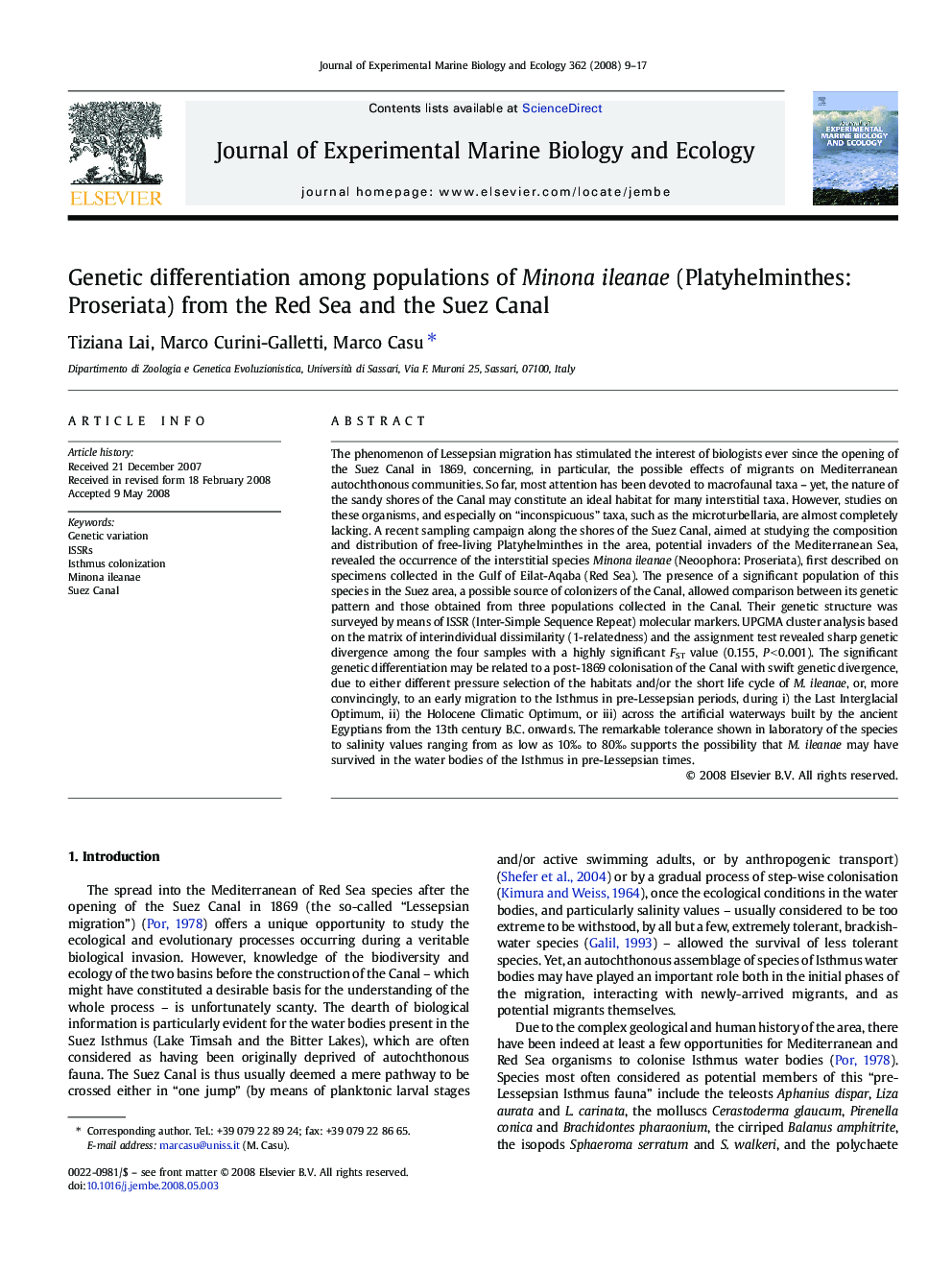| کد مقاله | کد نشریه | سال انتشار | مقاله انگلیسی | نسخه تمام متن |
|---|---|---|---|---|
| 4397291 | 1305877 | 2008 | 9 صفحه PDF | دانلود رایگان |

The phenomenon of Lessepsian migration has stimulated the interest of biologists ever since the opening of the Suez Canal in 1869, concerning, in particular, the possible effects of migrants on Mediterranean autochthonous communities. So far, most attention has been devoted to macrofaunal taxa – yet, the nature of the sandy shores of the Canal may constitute an ideal habitat for many interstitial taxa. However, studies on these organisms, and especially on “inconspicuous” taxa, such as the microturbellaria, are almost completely lacking. A recent sampling campaign along the shores of the Suez Canal, aimed at studying the composition and distribution of free-living Platyhelminthes in the area, potential invaders of the Mediterranean Sea, revealed the occurrence of the interstitial species Minona ileanae (Neoophora: Proseriata), first described on specimens collected in the Gulf of Eilat-Aqaba (Red Sea). The presence of a significant population of this species in the Suez area, a possible source of colonizers of the Canal, allowed comparison between its genetic pattern and those obtained from three populations collected in the Canal. Their genetic structure was surveyed by means of ISSR (Inter-Simple Sequence Repeat) molecular markers. UPGMA cluster analysis based on the matrix of interindividual dissimilarity (1-relatedness) and the assignment test revealed sharp genetic divergence among the four samples with a highly significant FST value (0.155, P < 0.001). The significant genetic differentiation may be related to a post-1869 colonisation of the Canal with swift genetic divergence, due to either different pressure selection of the habitats and/or the short life cycle of M. ileanae, or, more convincingly, to an early migration to the Isthmus in pre-Lessepsian periods, during i) the Last Interglacial Optimum, ii) the Holocene Climatic Optimum, or iii) across the artificial waterways built by the ancient Egyptians from the 13th century B.C. onwards. The remarkable tolerance shown in laboratory of the species to salinity values ranging from as low as 10‰ to 80‰ supports the possibility that M. ileanae may have survived in the water bodies of the Isthmus in pre-Lessepsian times.
Journal: Journal of Experimental Marine Biology and Ecology - Volume 362, Issue 1, 18 July 2008, Pages 9–17